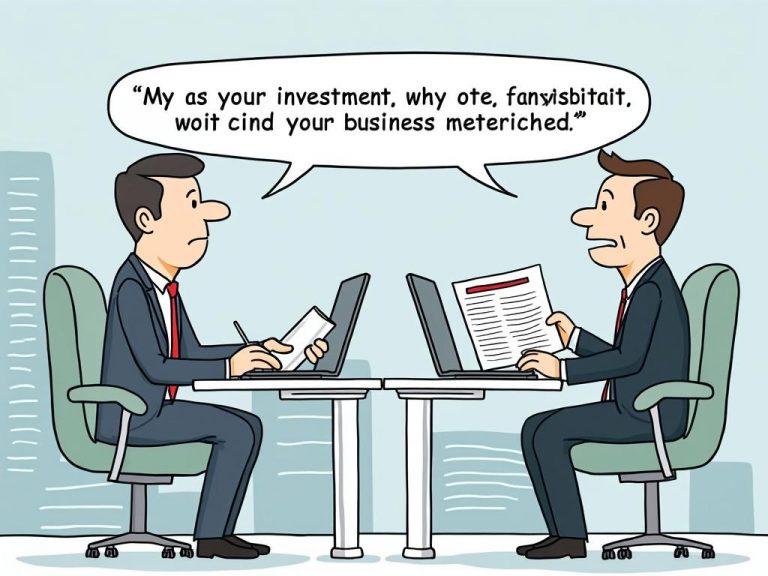
Futures Contracts Explained: How Investors Trade on Future Prices
Reading time: 12 minutes
Ever wondered how farmers lock in grain prices months before harvest, or how airlines hedge against fuel costs? You’re about to discover the fascinating world of futures contracts—financial instruments that let you trade on tomorrow’s prices today.
Table of Contents
- What Are Futures Contracts?
- How Futures Trading Works
- Types of Futures Contracts
- Popular Trading Strategies
- Risks and Rewards
- Getting Started Guide
- Frequently Asked Questions
- Your Trading Roadmap Forward
What Are Futures Contracts?
Think of futures contracts as financial time machines. They’re standardized agreements to buy or sell an asset at a predetermined price on a specific future date. Unlike buying stocks where you own shares immediately, futures contracts represent a commitment to transact later.
Key Characteristics:
- Standardized contract terms (size, quality, delivery date)
- Traded on regulated exchanges
- Require margin deposits, not full payment
- Can be closed before expiration
Here’s the straight talk: Futures aren’t just for Wall Street veterans—they’re powerful tools for risk management and speculation that everyday investors can use strategically.
Real-World Example: The Soybean Farmer’s Dilemma
Consider Sarah, a soybean farmer in Iowa. It’s March, and she’s planning her spring planting. Current soybean prices are $14 per bushel, but she won’t harvest until October. What if prices crash to $10 by then?
Sarah enters a futures contract to sell 5,000 bushels at $13.50 per bushel for October delivery. Now she’s locked in her price, regardless of market fluctuations. If prices drop to $10, she still receives $13.50. If they rise to $18, she misses the upside but maintains her planned profit margin.
How Futures Trading Works
Futures trading operates on a simple principle: leverage and standardization. You don’t need the full contract value upfront—just a margin deposit, typically 3-15% of the contract’s worth.
The Margin System
Let’s break down a practical scenario. Suppose you want to trade crude oil futures:
- Contract size: 1,000 barrels
- Current price: $80 per barrel
- Contract value: $80,000
- Initial margin: $6,000 (7.5%)
You control $80,000 worth of oil with just $6,000. If oil prices move $1 per barrel, your account gains or loses $1,000—a significant percentage of your margin.
Daily Settlement Process
Unlike stocks, futures accounts are “marked to market” daily. Profits and losses are calculated and settled each trading day. This system, called variation margin, ensures contract integrity but can trigger margin calls if your account drops below maintenance levels.
Types of Futures Contracts
Futures markets cover virtually every asset class imaginable. Here’s a comprehensive breakdown:
| Asset Category | Popular Contracts | Typical Uses | Margin Requirements | Risk Level |
|---|---|---|---|---|
| Agricultural | Corn, Wheat, Soybeans | Hedge crop prices | $1,000-$3,000 | Medium |
| Energy | Crude Oil, Natural Gas | Hedge fuel costs | $4,000-$8,000 | High |
| Metals | Gold, Silver, Copper | Portfolio diversification | $3,000-$10,000 | Medium-High |
| Financial | S&P 500, Treasury Bonds | Portfolio hedging | $15,000-$25,000 | High |
| Currency | Euro, Japanese Yen | FX risk management | $2,000-$5,000 | Medium-High |
Market Volume Comparison
Understanding market liquidity helps you choose appropriate contracts. Here’s daily trading volume data:
Average Daily Trading Volume (in millions of contracts)
Popular Trading Strategies
Successful futures trading isn’t about luck—it’s about strategy. Let’s explore proven approaches that both beginners and experienced traders use.
Hedging: The Risk Management Approach
Hedging protects existing positions from adverse price movements. Consider this scenario:
Case Study: The Portfolio Manager’s Hedge
Jim manages a $50 million stock portfolio tracking the S&P 500. With election uncertainty looming, he’s concerned about potential market volatility. Instead of selling stocks (triggering taxes and transaction costs), he shorts S&P 500 futures contracts.
If the market drops 10%, his portfolio loses $5 million, but his futures short position gains approximately $5 million, offsetting the loss. This strategy, called a portfolio hedge, maintains market exposure while limiting downside risk.
Speculation: Trading for Profit
Speculators aim to profit from price movements without owning the underlying asset. Here’s a practical example:
The Natural Gas Trade
Winter weather forecasts predict colder temperatures, potentially driving natural gas demand. A speculator buys natural gas futures at $3.50 per MMBtu, expecting prices to rise. If correct and prices reach $4.20, the profit is $0.70 per MMBtu—on a 10,000 MMBtu contract, that’s $7,000 profit on roughly $3,500 margin.
Spread Trading: Capitalizing on Relationships
Spread trading involves simultaneously buying and selling related futures contracts to profit from price relationships. The calendar spread is particularly popular:
Buy December crude oil futures, sell March crude oil futures. This strategy profits if the price difference between contracts changes favorably, regardless of absolute price direction.
Risks and Rewards
Futures trading offers substantial opportunities but comes with significant risks. Understanding both sides is crucial for success.
The Leverage Double-Edge
Leverage amplifies both gains and losses. A 5% price move in the underlying asset can result in a 50% change in your margin account. This mathematical reality makes position sizing critical.
Risk Management Essentials:
- Position sizing: Never risk more than 2-3% of your capital on a single trade
- Stop-loss orders: Predetermined exit points to limit losses
- Diversification: Spread risk across different asset classes
- Market knowledge: Understand factors affecting your chosen markets
Common Pitfalls to Avoid
Over-leveraging: The biggest mistake new traders make is using excessive leverage. Start small and gradually increase position sizes as you gain experience.
Ignoring fundamentals: Technical analysis is valuable, but understanding supply and demand fundamentals in your chosen markets is essential.
Emotional trading: Fear and greed drive poor decisions. Stick to your trading plan and predetermined risk parameters.
Getting Started Guide
Ready to enter the futures market? Here’s your step-by-step roadmap:
Step 1: Education and Preparation
Before risking real money, invest time in learning. Study market mechanics, understand contract specifications, and practice with paper trading. Most successful traders spend months learning before their first live trade.
Step 2: Choose Your Broker
Select a futures broker offering:
- Competitive commission rates
- Reliable trading platforms
- Quality research and market data
- Strong customer support
- Adequate margin requirements
Step 3: Develop Your Strategy
Will you hedge existing positions or speculate for profit? Your strategy determines which contracts to trade and how much capital to allocate.
Step 4: Start Small
Begin with liquid, less volatile contracts like E-mini S&P 500 futures. Trade small sizes until you’re comfortable with the mechanics and develop consistent profitability.
Frequently Asked Questions
How much money do I need to start trading futures?
Minimum account sizes vary by broker, but $10,000-$25,000 provides adequate capital for prudent risk management. Some brokers accept smaller accounts, but larger balances offer more flexibility and better withstand market volatility. Remember, margin requirements are just the minimum—you need additional capital to handle adverse moves.
What happens if I hold a futures contract until expiration?
Most futures contracts require physical delivery of the underlying asset at expiration. However, 98% of futures positions are closed before expiration through offsetting trades. If you’re long one contract, you sell one identical contract to close the position. Financial futures like stock index futures typically settle in cash rather than physical delivery.
Can I lose more money than I invest in futures trading?
Yes, futures trading can result in losses exceeding your initial margin deposit. If market moves against your position, you’ll receive margin calls requiring additional funds. If you can’t meet margin calls, your broker will liquidate your position, potentially at a loss greater than your original investment. This unlimited loss potential makes risk management crucial.
Your Trading Roadmap Forward
Futures trading success isn’t built overnight—it’s a journey of continuous learning and disciplined execution. Here’s your practical action plan:
Immediate Next Steps:
- Week 1-2: Open a demo account and practice with paper trading
- Week 3-4: Study one specific market (choose based on your interests or existing knowledge)
- Month 2: Develop and test a simple trading strategy
- Month 3: Open a live account with conservative position sizing
- Ongoing: Maintain a trading journal to track performance and learn from mistakes
Long-term Success Factors:
Focus on risk management over profit maximization. The traders who survive and thrive treat futures trading as a business, not gambling. Develop systems, follow rules, and never risk money you can’t afford to lose.
As global markets become increasingly interconnected, futures contracts will continue evolving with new products and technologies. Electronic trading, algorithmic systems, and cryptocurrency futures represent the industry’s future direction.
Will you join the ranks of successful futures traders who use these powerful instruments to manage risk and capitalize on opportunities? The tools and knowledge are available—your success depends on discipline, education, and strategic thinking. Start your futures trading journey today, but remember: preparation and patience are your greatest allies in this challenging but rewarding market.

Article reviewed by August Schmidt, Alternative Investments Expert | Diversifying Portfolios with Unique Assets, on July 3, 2025








